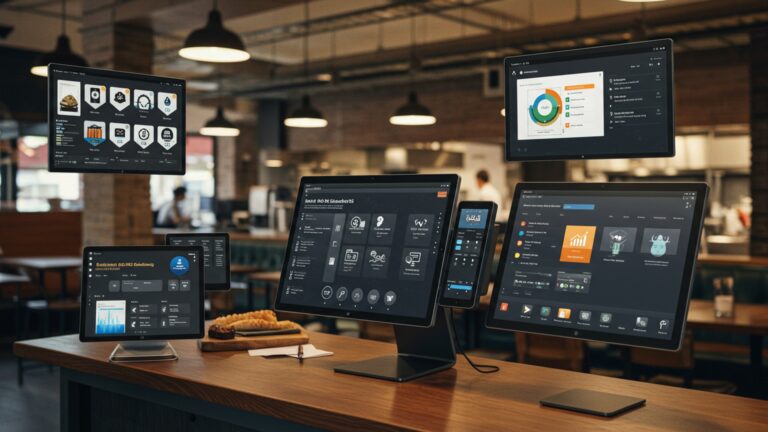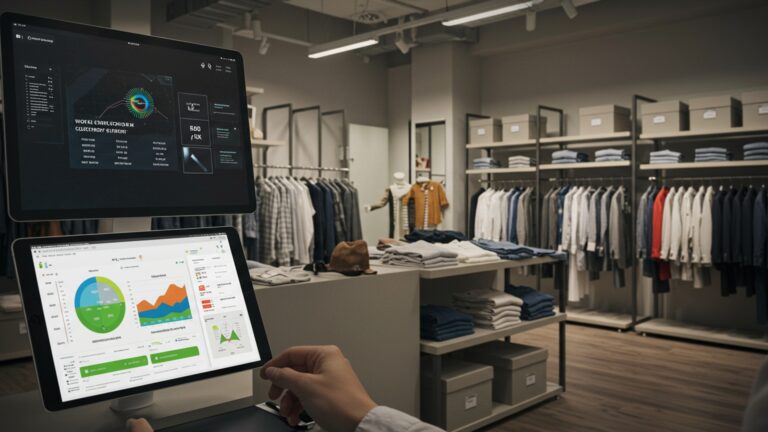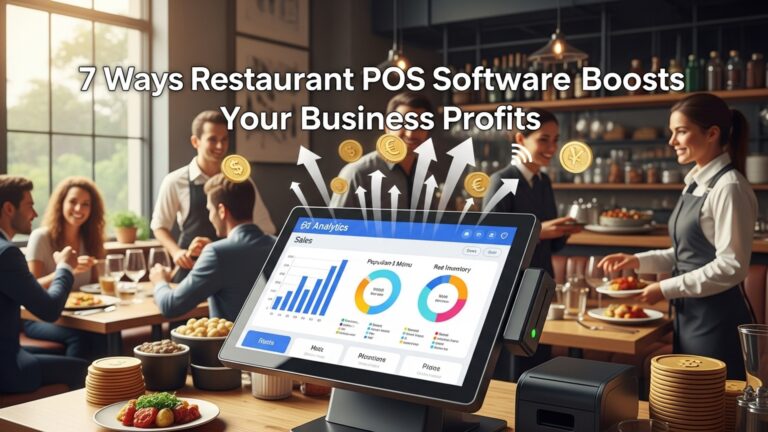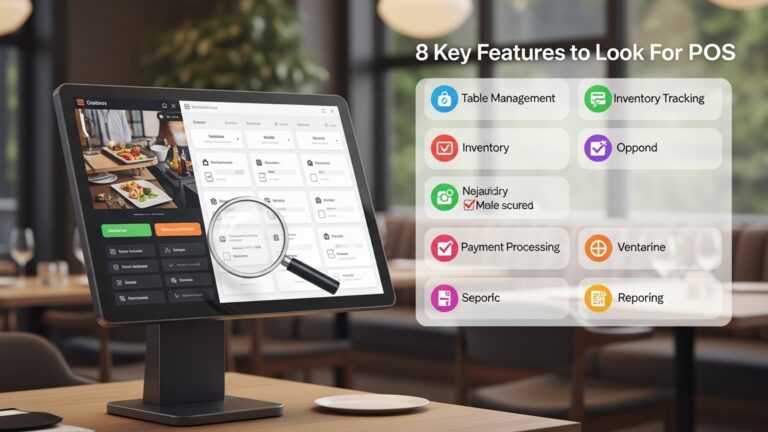Learn 8 Common Restaurant POS Software Mistakes and How to Avoid Them
In today’s ultra-competitive culinary landscape, a robust restaurant POS software system forms the operational bedrock, yet its misconfiguration or misuse can swiftly erode profitability. From frustrating order misfires and critical inventory discrepancies that inflate food costs, to overlooked security vulnerabilities inviting costly data breaches, the ripple effect of common POS blunders extends far beyond a single transaction. Even with advanced cloud-based platforms offering seamless third-party integrations for delivery and loyalty programs, a lack of proactive management transforms these powerful tools into significant liabilities. Preventing these critical errors, often stemming from inadequate staff training or neglected system updates, ensures smooth service, accurate financial reporting. ultimately, a thriving bottom line.
1. Inadequate Staff Training and Onboarding
One of the most pervasive and costly mistakes restaurants make is failing to adequately train their staff on the nuances of their Restaurant POS software. A Point of Sale (POS) system is the central nervous system of any modern restaurant operation, handling everything from order taking and payment processing to inventory management and table assignments. When staff members are not proficient, it leads to a cascade of errors: slow service, incorrect orders, mischarged customers. ultimately, a frustrated team and a tarnished customer experience.
Implications of Poor Training:
- Increased Error Rates
- Slowed Service
- Staff Frustration and Turnover
- Reduced Customer Satisfaction
Untrained staff are prone to inputting wrong orders, applying incorrect discounts, or processing payments inaccurately, leading to revenue loss and reconciliation headaches.
Fumbling with the POS system during peak hours drastically reduces efficiency, leading to longer wait times and decreased table turnover.
A difficult or confusing system, especially without proper guidance, can be a major source of stress for employees, contributing to low morale and higher attrition rates.
Incorrect orders or long waits directly impact the customer experience, potentially leading to negative reviews and lost business.
How to Avoid This Mistake:
- Structured Training Program
- Hands-On Practice
- Ongoing Refreshers and Updates
- Designated Trainers
- Feedback Loop
Develop a comprehensive training module for all new hires that covers every aspect of the Restaurant POS software relevant to their role (e. g. , servers need order entry, kitchen staff need order display, managers need reporting).
Provide a dedicated training mode or a dummy POS terminal where staff can practice taking orders, processing payments. handling common scenarios without impacting live operations.
Conduct regular refresher training sessions, especially when new features are introduced or software updates occur. Keep a manual or quick-reference guide accessible.
Empower experienced and proficient staff members to act as trainers and mentors for new team members.
Encourage staff to provide feedback on the training process and the POS system itself, allowing for continuous improvement.
2. Ignoring Regular Software Updates
Many restaurant owners and managers treat their Restaurant POS software like a “set it and forget it” system. They often overlook or actively postpone regular software updates, not realizing the critical benefits these updates provide. Modern POS systems are constantly evolving, with developers releasing patches, new features. security enhancements.
Implications of Ignoring Updates:
- Security Vulnerabilities
- Missed Features and Enhancements
- Performance Degradation
- Compatibility Issues
Outdated software is a prime target for cyber threats, leaving sensitive customer and business data exposed to breaches.
Updates often include new functionalities that can streamline operations, improve reporting, or enhance customer engagement (e. g. , new payment options, loyalty program integrations).
Bugs and inefficiencies can accumulate over time, leading to slower system performance, crashes. unexpected downtime.
Older software versions may become incompatible with new hardware, operating systems, or integrated third-party applications, causing system conflicts.
How to Avoid This Mistake:
- Schedule Regular Updates
- comprehend Release Notes
- Automate Updates (if possible)
- Test Before Deployment
- Backup Data
Designate specific, off-peak times (e. g. , late at night, before opening) for system updates to minimize disruption.
Always review the release notes accompanying updates to grasp new features, bug fixes. potential changes to workflows.
If your Restaurant POS software allows for automatic updates, configure them carefully, ensuring they occur during non-critical hours. For critical systems, manual oversight is often preferred.
For major updates, if possible, test them in a non-production environment first to identify any unforeseen issues before rolling them out to all terminals.
Always perform a full data backup before initiating any major software update to ensure data recovery in case of an issue.
3. Choosing the Wrong System for Your Needs
The market for Restaurant POS software is vast and varied, offering solutions tailored to every type of dining establishment, from small coffee shops to multi-location fine dining empires. A common pitfall is selecting a system based solely on price, popularity, or features that aren’t actually relevant to your specific operational needs. An ill-fitting POS system can lead to inefficiencies, frustration. unnecessary costs in the long run.
Implications of a Mismatched POS:
- Overspending on Unused Features
- Lack of Essential Functionality
- Scalability Issues
- Operational Bottlenecks
Paying for advanced modules (e. g. , complex inventory management for a simple cafe) that you’ll never utilize.
Opting for a basic system that lacks critical features for your operation (e. g. , table management for a sit-down restaurant, multi-location reporting for a chain).
Choosing a system that cannot grow with your business, necessitating an expensive and disruptive migration later on.
Forcing your unique workflows into a system that isn’t designed for them, leading to workarounds and inefficiencies.
How to Avoid This Mistake:
Before committing to a Restaurant POS software, conduct a thorough needs assessment:
- Define Your Requirements
- Consider Your Restaurant Type
List all essential features (e. g. , online ordering integration, loyalty programs, kitchen display systems, reservations, ingredient-level inventory).
Different restaurant models have different POS needs.
| Restaurant Type | Key POS Features to Prioritize |
|---|---|
| Quick Service (QSR) / Fast Casual | Fast order entry, self-order kiosks, robust online ordering integration, quick payment processing, drive-thru management. |
| Fine Dining / Full Service | Table management, reservation integration, split checks, course management, detailed ingredient tracking, sophisticated reporting, handheld devices for servers. |
| Bars / Pubs | High-speed order entry, tab management, drink recipe management, age verification integration, inventory for liquor. |
| Cafes / Bakeries | Menu modifiers, loyalty programs, inventory for baked goods/ingredients, quick payment processing, customer display screens. |
- Evaluate Scalability
- Request Demos and Trials
- Read Reviews and Seek Recommendations
Choose a system that can accommodate future growth, whether it’s adding more terminals, locations, or expanding your service offerings.
Don’t rely solely on marketing materials. Get hands-on with the software through demos and, if possible, free trials to see how it performs in a real-world setting.
Consult industry reviews and get recommendations from other restaurant owners with similar operations.
4. Neglecting Data Backup and Security
In the digital age, data is currency. a restaurant’s POS system holds a treasure trove of sensitive insights: sales figures, customer payment details, inventory levels. employee records. Overlooking robust data backup protocols and comprehensive security measures is an egregious mistake that can lead to catastrophic losses, legal issues. irreparable damage to your reputation.
Implications of Poor Data Security:
- Data Loss
- Security Breaches
- Compliance Violations
- Reputational Damage
Hardware failures, accidental deletions, or natural disasters can wipe out critical sales and inventory data without proper backups, leading to significant operational disruption and financial losses.
Inadequate security can make your system vulnerable to hackers, leading to the theft of customer credit card insights, personal data. proprietary business insights.
Failing to meet industry standards (e. g. , PCI DSS for payment processing) can result in hefty fines and legal penalties.
A data breach can severely erode customer trust and public perception, leading to a long-term decline in business.
How to Avoid This Mistake:
- Implement Regular Backups
- Cloud-Based Backups
- Local Backups
- Automate Backups
- Strengthen Security Measures
- Strong Passwords and Multi-Factor Authentication (MFA)
- User Permissions
- Firewalls and Antivirus
- Secure Network
- PCI DSS Compliance
- Disaster Recovery Plan
Most modern Restaurant POS software offers cloud-based backup solutions, ensuring data is stored off-site and automatically. This is generally the most reliable method.
Maintain local backups on external hard drives or network-attached storage (NAS) devices as a secondary measure. Ensure these are stored securely and off-site periodically.
Schedule backups to run automatically during non-operational hours to ensure consistency and minimize manual oversight.
Enforce complex passwords for all POS users and enable MFA wherever available.
Implement granular user permissions, ensuring employees only have access to the functions and data necessary for their role.
Ensure all POS terminals and network infrastructure are protected by robust firewalls and up-to-date antivirus software.
Use a secure, encrypted Wi-Fi network separate from public guest Wi-Fi.
Work with your POS provider and payment processor to ensure your system and processes are fully compliant with Payment Card Industry Data Security Standard (PCI DSS) regulations.
Develop a clear plan for what to do in case of a data loss event or security breach, including who to contact and steps for recovery.
5. Failing to Integrate with Other Systems
A modern restaurant relies on a suite of digital tools beyond just the POS: inventory management, accounting, online ordering platforms, loyalty programs. employee scheduling. A significant mistake is treating the Restaurant POS software as an isolated island, rather than the central hub of an integrated ecosystem. This fragmentation leads to manual data entry, inconsistencies, increased labor costs. a lack of holistic business insights.
Implications of Non-Integrated Systems:
- Manual Data Entry and Errors
- Inaccurate Inventory
- Siloed details
- Inefficient Workflows
insights has to be manually transferred between systems (e. g. , sales data to accounting, orders to inventory), leading to human error and wasted time.
Without real-time integration, inventory counts from the POS may not accurately reflect actual stock levels, leading to stockouts or over-ordering.
Critical business insights are scattered across different platforms, making it difficult to get a complete picture of profitability, sales trends. operational efficiency.
Staff spend more time on administrative tasks rather than focusing on customer service or core operations.
How to Avoid This Mistake:
- Prioritize Integration Capabilities
- Identify Key Integration Needs
- Accounting Software
- Inventory Management
- Online Ordering Platforms
- Loyalty Programs
- Employee Scheduling/Payroll
- Consult with Your POS Provider
- Phased Integration
When selecting Restaurant POS software, make integration a key criterion. Look for systems that offer open APIs or have pre-built integrations with popular third-party applications you use or plan to use.
Determine which systems are most critical to integrate with your POS:
Automate sales data transfer to QuickBooks, Xero, etc.
Real-time deduction of ingredients/items as sales occur.
Seamlessly push online orders directly to the kitchen display system (KDS) via the POS.
Automatically track customer points and rewards through POS transactions.
Integrate time clock data for streamlined payroll.
Discuss your integration needs with potential POS vendors to grasp their capabilities and recommended solutions.
You don’t have to integrate everything at once. Start with the most critical systems and gradually expand your integrations.
6. Overlooking Customer Support Quality
No matter how robust or user-friendly your Restaurant POS software is, issues are inevitable. Hardware can malfunction, software can glitch. new employees will always have questions. A common and often underestimated mistake is neglecting to evaluate the quality and availability of customer support when choosing a POS system. Being stranded without timely assistance during a busy shift can quickly turn a minor inconvenience into a major operational crisis.
Implications of Poor Customer Support:
- Extended Downtime
- Increased Stress and Frustration
- Unresolved Issues
- Lack of Timely Updates/Guidance
Unresolved technical issues can halt operations, leading to lost sales and customer frustration.
Staff and management are under immense pressure when the POS isn’t working, especially during peak hours, impacting morale.
Persistent problems can go unfixed, causing ongoing inefficiencies and revenue leakage.
Without accessible support, you might miss out on understanding new features or best practices.
How to Avoid This Mistake:
- Evaluate Support Channels and Availability
- 24/7 Support
- Multiple Channels
- Response Times
- Test Support During the Sales Process
- Read Customer Reviews
- comprehend Support Costs
- Dedicated Account Manager
Restaurants operate beyond traditional business hours. Ensure your POS provider offers support during your operating hours, ideally 24/7.
Look for providers offering support via phone, email, live chat. a comprehensive knowledge base.
Inquire about guaranteed response and resolution times for critical issues.
Before committing, try reaching out to their support team with some dummy questions. Assess their responsiveness, helpfulness. technical expertise.
Pay close attention to what existing customers say about the provider’s support quality in online reviews and forums.
Clarify if support is included in the monthly fee or if there are additional charges for different tiers of service.
For larger operations, inquire if a dedicated account manager is available for personalized support and strategic guidance.
7. Not Utilizing Reporting and Analytics Features
Modern Restaurant POS software is far more than just a cash register; it’s a powerful data collection and analysis tool. A significant oversight is failing to delve into the wealth of reporting and analytics features that these systems offer. Many restaurant operators only use their POS for transactions, missing out on crucial insights that can drive better business decisions, improve profitability. enhance operational efficiency.
Implications of Ignoring Reporting:
- Missed Sales Opportunities
- Poor Inventory Management
- Inefficient Staffing
- Lack of Profitability Insights
- Slow Response to Trends
Without understanding peak hours, popular menu items, or best-performing servers, you can’t optimize staffing, promotions, or menu engineering.
Lack of insights into ingredient usage and waste leads to overstocking, spoilage, or frequent stockouts.
Not knowing busy periods or individual staff performance means suboptimal scheduling and higher labor costs.
Without detailed reports, it’s challenging to accurately assess the profitability of menu items, promotions, or even the overall business.
Market changes or customer preferences can go unnoticed, leading to a reactive rather than proactive business strategy.
How to Avoid This Mistake:
- Regularly Review Key Reports
- Sales Reports
- Inventory Reports
- Labor Reports
- Customer Reports
- Identify Key Performance Indicators (KPIs)
- Train Managers on Analytics
- Use Data for Decision Making
- Menu Engineering
- Staff Scheduling
- Inventory Optimization
- Marketing and Promotions
- Leverage Custom Reports
Schedule time each day, week. month to review critical reports from your Restaurant POS software:
Daily, weekly, monthly sales, sales by item, sales by category, sales by server/cashier, sales by time of day.
Usage, waste, current stock levels, low-stock alerts.
Employee hours, sales per labor hour, tips.
Popular items, average spend, loyalty program engagement.
Determine which metrics are most essential for your business (e. g. , average check size, table turnover rate, food cost percentage) and track them consistently using your POS data.
Ensure your management team understands how to access, interpret. act upon the data provided by the POS system.
Identify high-profit, high-popularity items to promote. low-profit, low-popularity items to re-evaluate or remove.
Adjust staffing levels based on historical sales data to optimize service and labor costs.
Fine-tune ordering based on precise usage data to reduce waste and prevent stockouts.
Target promotions based on customer purchasing habits and popular items.
If your POS allows, create custom reports that combine data points relevant to your unique business questions.
8. Poor Hardware Maintenance
While much focus is often placed on the software aspect of a POS system, the underlying hardware—terminals, receipt printers, cash drawers, kitchen display screens. card readers—is equally vital. Neglecting regular maintenance of these physical components is a common mistake that can lead to unexpected failures, slow performance. disruptions to service, directly impacting efficiency and customer satisfaction.
Implications of Poor Hardware Maintenance:
- System Downtime
- Slow Performance
- Increased Repair Costs
- Inaccurate Transactions
- Decreased Lifespan
A faulty printer, unresponsive touchscreen, or failing card reader can bring operations to a standstill, especially during peak hours.
Accumulated dust, outdated components, or stressed systems can lead to sluggish performance, frustrating staff and slowing down service.
Proactive maintenance can prevent minor issues from escalating into major, expensive repairs or premature hardware replacement.
Malfunctioning card readers or scanners can lead to payment processing errors or missed sales.
Lack of care shortens the operational life of expensive POS hardware, forcing earlier replacement.
How to Avoid This Mistake:
- Regular Cleaning Schedule
- Terminals/Screens
- Printers
- Cash Drawers
- Keyboards/Mice
- Environmental Control
- Temperature
- Dust/Grease
- Power Protection
- Surge Protectors
- Uninterruptible Power Supply (UPS)
- Cable Management
- Scheduled Hardware Checks
- Professional Servicing
Use appropriate screen cleaners and microfiber cloths to wipe down touchscreens daily, removing grease and spills.
Clean receipt printer heads regularly according to manufacturer guidelines to prevent faded or unreadable receipts.
Ensure drawers are free of debris and open/close smoothly.
Clean regularly, especially in dusty or spill-prone environments.
Ensure POS hardware is in a well-ventilated area, away from direct heat sources (like ovens or direct sunlight) to prevent overheating.
Protect hardware from excessive dust, grease. moisture, which are common in kitchen and bar environments.
Connect all POS hardware to surge protectors to guard against power fluctuations.
For critical terminals, a UPS can provide temporary power during outages, allowing for graceful shutdown and preventing data corruption.
Keep cables organized and secured to prevent accidental disconnections, tripping hazards. damage.
Periodically inspect all hardware for signs of wear and tear, loose connections, or unusual noises. Replace consumables like printer paper and ink/ribbons proactively.
Consider professional maintenance for complex hardware components or network infrastructure on an annual basis.
Conclusion
Avoiding common POS software mistakes isn’t just about saving a few dollars; it’s about safeguarding your entire operation and reputation. I recall a bustling Friday night where a simple programming error led to an entire section of drinks being undercharged for hours, a classic example of how minor oversights snowball without vigilance. Today’s cloud-based systems, like Toast or Square, demand continuous learning, making regular staff training not just beneficial. essential for smooth service and accurate reporting. Proactively conducting weekly system audits, perhaps focusing on menu updates or discount applications, can catch these glitches before they impact your bottom line or frustrate guests. By implementing robust training protocols and embracing your POS as a strategic asset rather than just a transaction tool, you empower your team, reduce costly errors. ensure your restaurant thrives in a competitive digital landscape. Embrace this vigilance. watch your efficiency soar.
More Articles
Employee Training Strategies for New POS Software
Troubleshooting Common POS System Issues
Understanding POS System Security: Protecting Your Restaurant Data
How to Choose the Right Restaurant POS System for Your Business
Menu Management Best Practices for Your Restaurant POS
FAQs
What are some of the most common mistakes restaurants make with their POS software?
Many restaurants stumble with things like incorrect menu setup, inadequate staff training, not utilizing the system’s full reporting capabilities. overlooking critical security updates. It’s often about not setting it up right from the start or not keeping up with its maintenance.
My team struggles to use our POS efficiently. How can I help them get better?
The best way is through comprehensive and ongoing training. Don’t just show them once; provide regular refreshers, create simple cheat sheets. let them practice with mock orders. Make sure they interpret why certain steps are essential, not just how to do them.
Why is accurate menu setup in the POS so crucial for my business?
An accurate menu is foundational! Incorrect pricing, missing modifiers, or unavailable items lead to wrong orders, angry customers. lost revenue. It throws off inventory tracking and accounting, too. Double-checking every item, price. modifier before going live is a must.
What kind of security issues should I be mindful of with my restaurant’s POS system?
Security is a big one. You need to watch out for weak passwords, unauthorized access. outdated software. Always use strong, unique passwords, set up different user permissions for staff. make sure your system gets regular updates to patch any vulnerabilities. Don’t forget data backups!
Is it really worth my time to bother with all those POS software updates?
Absolutely! Skipping updates is a common pitfall. Updates often bring crucial security patches, bug fixes that improve performance. sometimes even new features that can streamline your operations or enhance the customer experience. Think of it as preventative maintenance for your digital backbone.
How can I actually use the data my POS collects to improve my restaurant?
Your POS collects a goldmine of data! Dive into the reports to spot sales trends, identify your most popular dishes, figure out peak hours. examine labor costs. This data helps you make smarter decisions about staffing, menu engineering, marketing efforts. inventory management.
My POS isn’t talking to my inventory system. Is that a big deal?
It definitely can be. A lack of integration between your POS and inventory system means manual data entry, which is a recipe for errors, wasted time. inaccurate stock counts. Integrating them automates the process, giving you real-time inventory visibility, reducing waste. making ordering much more efficient.





